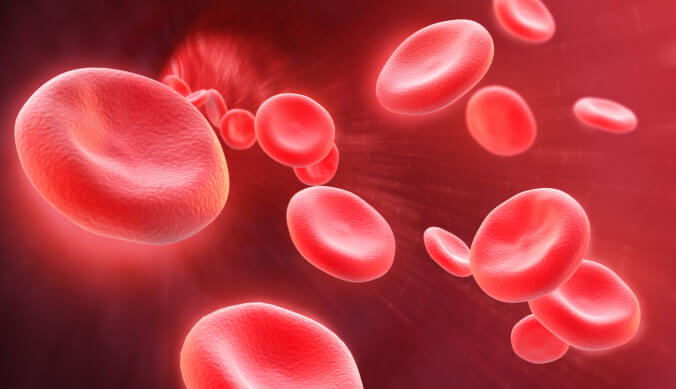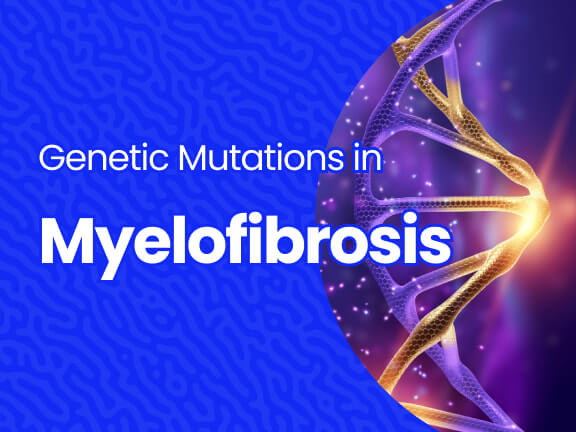Genetic Mutations in Myelofibrosis
Myelofibrosis develops when the DNA of bone marrow stem cells alters (mutates). The stem cells have the power to reproduce and divide into the many types of blood cells, such as red blood cells, white blood cells, and platelets.
The cause of genetic alterations in bone marrow stem cells is unknown.
The mutations are passed on to new cells as the mutant blood stem cells reproduce and divide. As more of these altered cells are produced, the effects on blood production become more serious.
To learn more about Myelofibrosis, read our ultimate guide: Myelofibrosis Ultimate Guide
The final outcome is frequently a deficiency in red blood cells, which causes the anemia seen in myelofibrosis, as well as an excess of white blood cells and varied levels of platelets. In myelofibrosis patients, the normally spongy bone marrow becomes scarred (fibrosis).
What Are Common Genetic Mutations in Myelofibrosis?
Most cases of primary myelofibrosis are linked to mutations in the JAK2, MPL, CALR, and TET2 genes. The JAK2 and MPL genes give instructions for manufacturing proteins that help blood cells develop and divide (proliferate). The CALR gene codes for a protein that performs a variety of tasks, including ensuring appropriate folding of newly generated proteins and maintaining normal calcium levels in cells. The TET2 gene gives instructions for producing a protein with no known function.

What Is the JAK2 Gene?
The JAK2 gene gives instructions for producing a protein that encourages cell growth and division (proliferation). This protein is part of the JAK/STAT signaling pathway, which delivers chemical signals from the outside of the cell to the nucleus. The JAK2 protein is particularly crucial for regulating blood cell formation from hematopoietic stem cells. These stem cells can differentiate into red blood cells, white blood cells, and platelets and are found in the bone marrow.
What Is the MPL Gene?
The MPL gene provides instructions for making creating the thrombopoietin receptor protein, which stimulates the development and division of cells. This receptor is particularly critical for the growth of megakaryocytes, which are blood cells that create platelets, the cells that aid in blood clotting. The thrombopoietin receptor may also play a role in the maintenance of hematopoietic stem cells, which are stem cells found in the bone marrow that have the ability to turn into red blood cells, white blood cells, and platelets.
What Is the CALR Gene?
The CALR gene directs the production of calreticulin, a multifunctional protein. This protein can be found in numerous places within the cell, including the endoplasmic reticulum (ER), the fluid-filled area inside the cell (cytoplasm), and the cell’s outer surface. The ER is important in protein processing and transport, and calreticulin is a component of this structure that ensures appropriate folding of newly produced proteins. Calreticulin is involved in maintaining the correct levels of calcium ions in the ER, which is a storage place for charged calcium atoms (calcium ions).

What Is the TET2 Gene?
The TET2 gene gives instructions for producing a protein with no known function. Researchers believe the TET2 protein is involved in controlling the transcription process, which is the initial stage in protein creation, based on the function of related proteins. This protein is distributed throughout the body, but it may be especially crucial in the creation of blood cells from hematopoietic stem cells. These stem cells can divide into red blood cells, white blood cells, and platelets and are found in the bone marrow. TET2 looks to be a tumor suppressor, which is a protein that blocks cells from duplicating and developing in an uncontrolled manner.
Sources:












